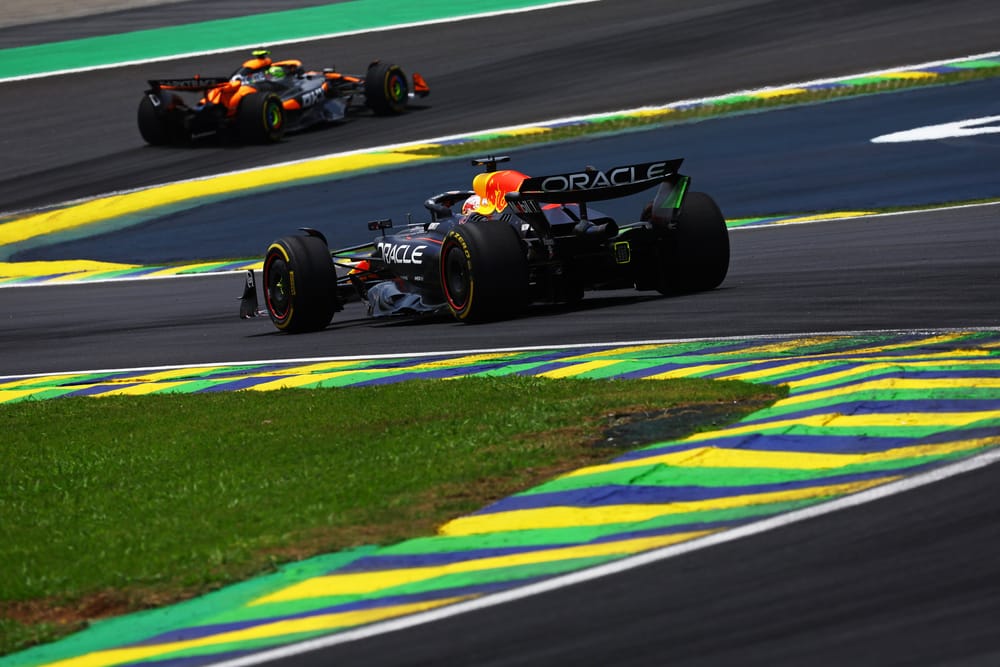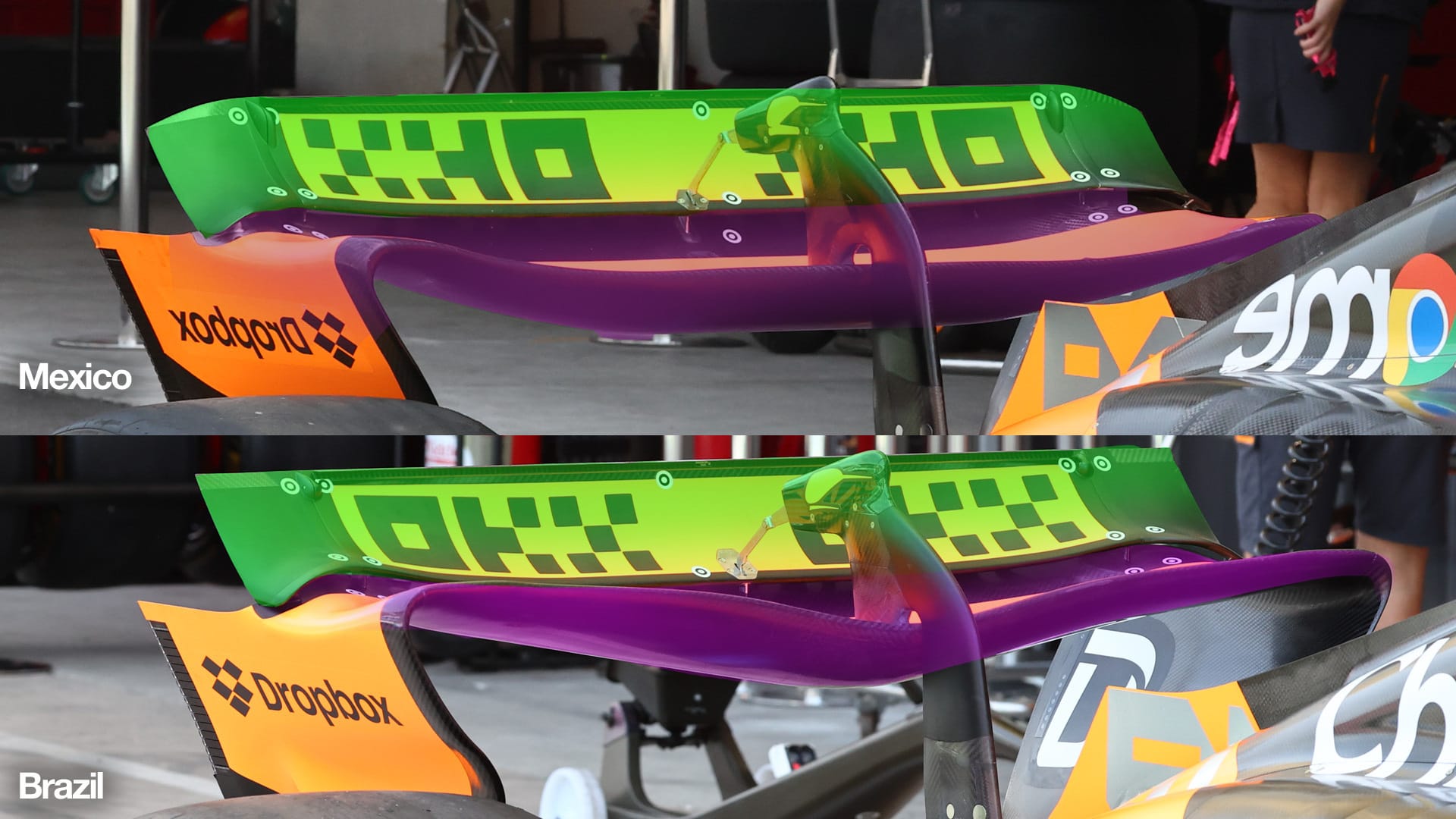Up Next

Formula 1’s technical tit-for-tat between title protagonists Red Bull and McLaren has taken a fresh twist at the Brazilian Grand Prix with the emergence of a new theory of alleged tyre trickery.
Red Bull is concerned by how suddenly its early season dominance ended, starting with the Miami Grand Prix in early May.
Max Verstappen won four of the first five races but has only won three of the 15 since - although he would have won the Miami race itself but for a safety car that allowed McLaren to score victory with Lando Norris.
Since the race after Miami, at Imola, Red Bull has generally found itself weaker than McLaren, which it feels has been particularly strong late in the race. After the summer break, Ferrari has become increasingly competitive as well.
After exploring various aspects of its own car development, admitting it has had some correlation issues and even using pre-Miami floor designs at some points to gain a reference, Red Bull believes that nothing has changed enough on its side to explain the drop off it has suffered, particularly in race pace.
It is searching for a possible explanation for that, plus the steps made by its main rivals, which Red Bull does not believe are justified by car upgrades alone.
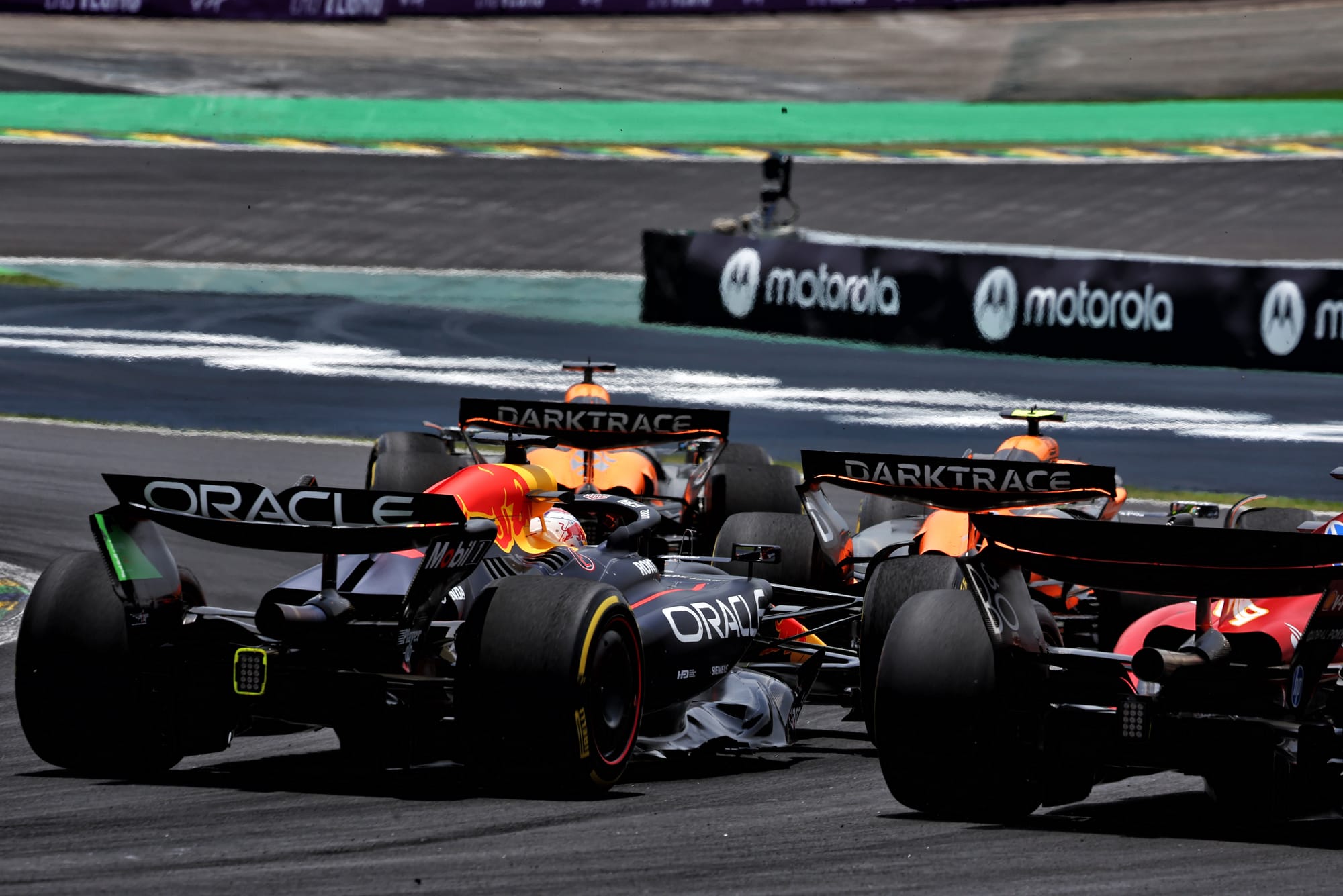
Having put pressure on rivals and the FIA on topics like flexi-wings and itself come under suspicion for running a bib-adjuster device that rivals believe could have been used to make surreptitious changes under parc ferme, Red Bull has since become suspicious that multiple teams, including McLaren and Ferrari, are adding water or another liquid in the tyres to keep them cooler during races.
After supposedly witnessing something unusual in Singapore related to water and a rival’s wheelrim and believing it has seen signs of water marks on wheel rims since, Red Bull suspects a small amount of fluid - perhaps as little as 50g - is being used to help transfer heat from the tyre to the rims.
“How to do that is very easy [in practical terms],” said Pirelli motorsport boss Mario Isola when asked by The Race how this might work and what the benefits would be, although Pirelli has not seen any evidence of it.
“You have a valve, you put water inside. How the system works is a different story.
“It's basically a thermal effect - heat transfer between the tyre and the rim that should give more consistency or less degradation to the tyres, even if you have worse control of the pressure.
“Because if you have a vapour inside the tyres, you lose the control of the pressure, you have a pressure that is higher.
“I heard the story, I tried to understand myself how it works and I collected this information. But if anyone did it or not, it's still a question mark.”
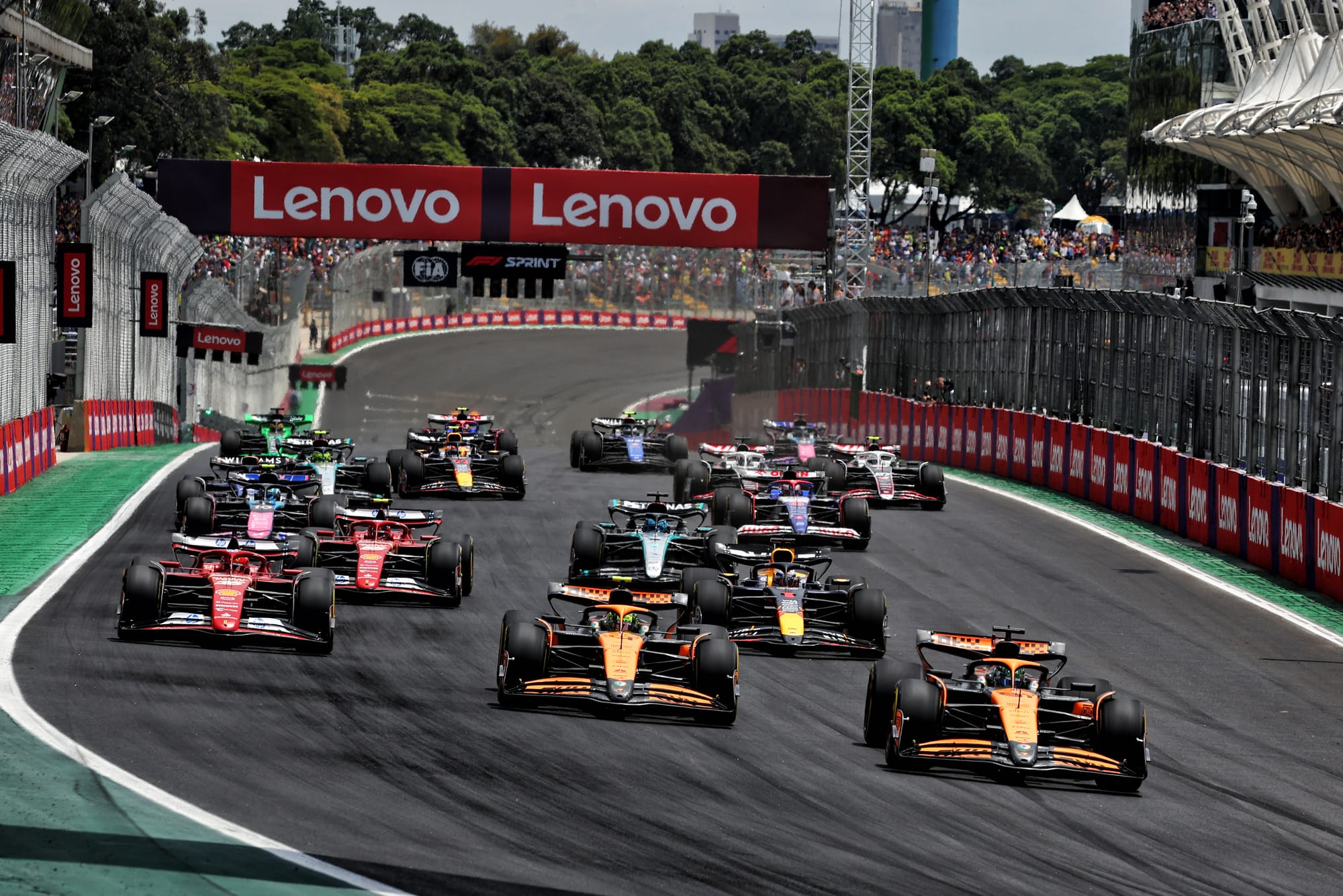
This would be a clear breach of the technical regulations and go against a technical directive that expressly forbids any change of the moisture content of tyres. Pirelli supplies the tyres with dry air inside. How this could be interfered with without detection has not been explained.
In terms of where Red Bull’s knowledge of the alleged tactic came from, it is believed it explored it in the past before it was clamped down on and thinks engineers who have since moved to other teams have continued with it.
This led to the matter being raised with the FIA, which along with tyre supplier Pirelli has been on the lookout for any suspicious behaviour at the last couple of events - including part of the post-sprint race tyre checks at Interlagos on Saturday.
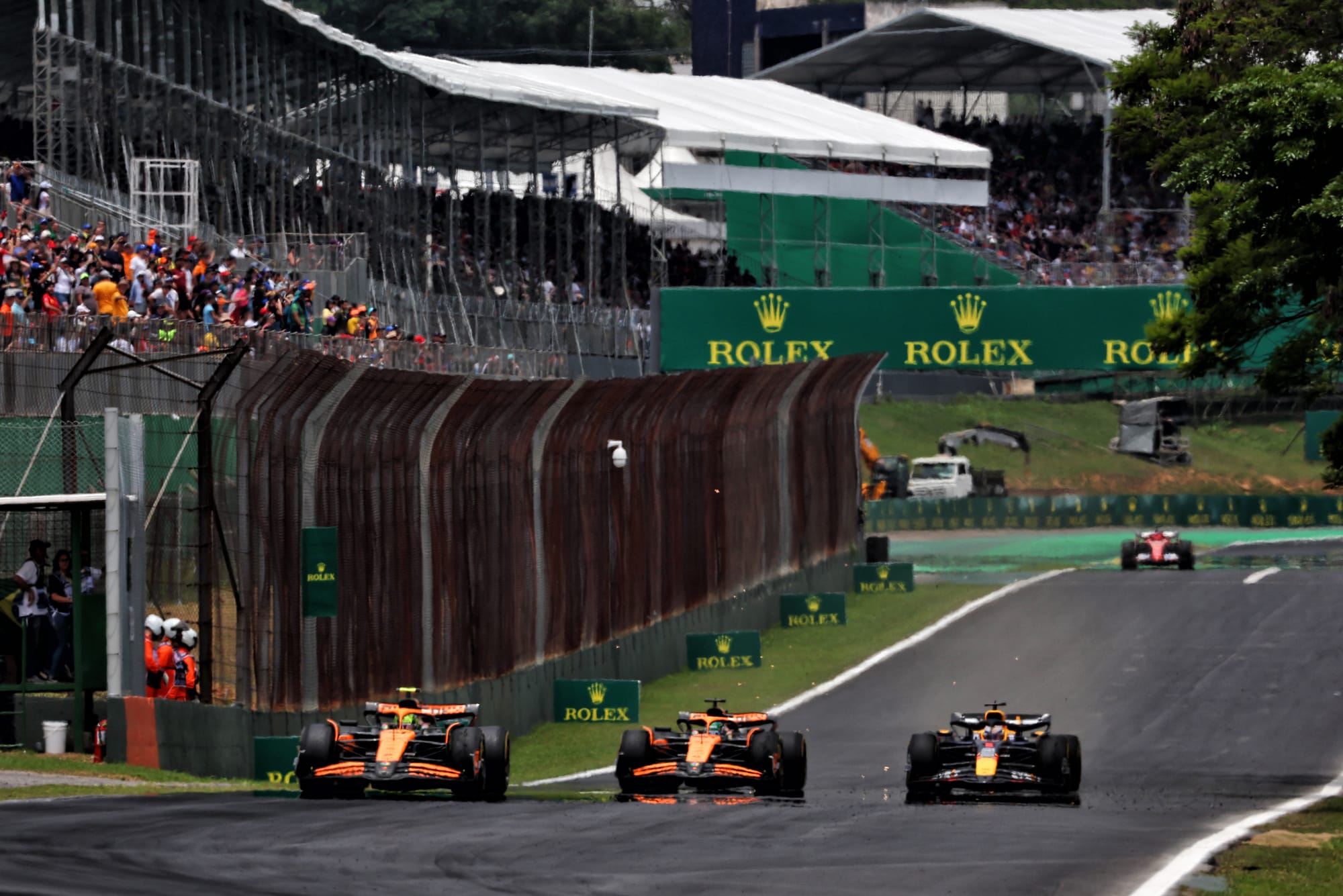
No evidence has been found of any wrongdoing so far. McLaren has not commented on Red Bull’s latest theory having previously made it clear it does not want to engage with its rival over such matters.
Red Bull feels the performance of certain teams in the Brazil sprint race vindicated its suspicions as it believes its race pace was stronger than it has been for several grands prix and thinks others were struggling more.
However, tyre wear was higher than expected on Saturday, due to the resurfaced track and higher than expected temperatures, so most cars were at what Pirelli categorises as “100% wear” by the end of the sprint.
“I cannot see anything strange from the data we have, so I don't have any evidence,” said Isola.
“It's up to the FIA now to decide what to do and to tell us if we can support it because at the end of the day, the only thing we can do is to support that.”
Retrospective action is not on the cards, not least because there does not appear to be any tangible evidence this is happening.
However, making representations to the FIA, combined with the fact this has now emerged publicly, means suspicions of any ongoing use of such tyre trickery will likely be quelled as it is being closely monitored.


